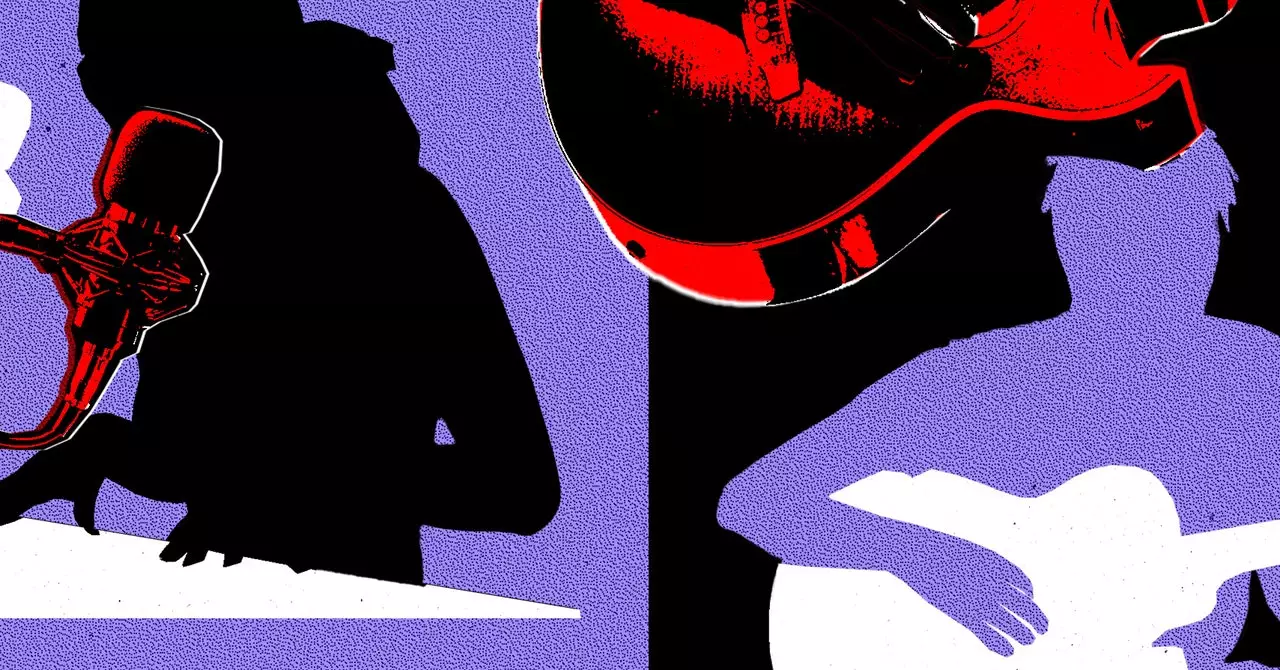In recent years, artificial intelligence (AI) has made significant inroads into various creative fields, and music production is no exception. While many may envision AI solely as a tool for generating songs from scratch, it also encompasses a range of applications including stem extraction, mixing, mastering, and even lyric brainstorming. These diverse technologies are attracting attention not only from professional producers but also from hobbyists who are exploring new avenues in music creation. As the industry grapples with the implications of these tools, discussions around their value and potential impact are intensifying.
Sam Hollander, a well-known figure in pop music, draws an intriguing parallel between the current rise of AI in music and the advent of drum machines in the 1980s. Just as session drummers were compelled to adapt in a landscape transformed by technology, musicians today are faced with the necessity of incorporating AI into their workflow to remain relevant. This evolution has prompted varied responses within the creative community. Some producers, like Hollander, have started to utilize AI tools for specific tasks—leveraging programs such as Suno and Udio for sampling purposes before refining the output in their compositions.
The complexities of this transformation highlight a pivotal crossroads in the music industry. Hollander envisions two distinct paths: one that embraces technology and one that resists it. This dichotomy reflects broader cultural anxieties about the role of technology in artistic creation and raises critical questions about authenticity and originality in an increasingly AI-assisted landscape.
Recently, a significant number of musicians have publicly opposed AI, asserting that its encroachment represents a “threat to the livelihoods” of artists whose creativity fuels the industry. This tension is palpable, as artists like Hollander opt to use AI primarily for generating ideas while maintaining their original human-crafted lyrics. The sentiment among some creators, including Hatcher, resonates with the idea that while AI possibilities are fascinating, they lack the nuanced understanding of human emotion and humor—elements that are critical to making music truly impactful.
This wariness toward AI’s capabilities makes it clear that there is a prevailing belief that human touch is irreplaceable. As Hatcher noted, creators are acutely aware that the risk of AI-generated music slipping into mediocrity is significant unless it incorporates substantial human input. This view suggests a future of collaboration rather than outright replacement, where AI acts as a tool rather than a sovereign creator.
Interestingly, a dual landscape of AI-generated music is emerging, encompassing both novelty and ambient genres. For instance, projects like the viral SpongeBob rap reflect the unusual yet entertaining application of AI in music, where shock value serves to engage audiences. On the flip side, channels on platforms like YouTube are tapping into ambient music generated by AI, routinely achieving millions of views by blending this technology quietly into the background of digital listening experiences. These channels illustrate how AI-generated content can achieve mass appeal while often remaining unbranded or uncredited.
The journey from experimental to mainstream adoption of AI tools has been rapid, occurring in the space of just over a year since these technologies became more accessible. As the lines blur between human- and AI-created sounds, the question of what constitutes originality becomes increasingly complex. Elements produced by AI can be indistinguishable from those crafted by human hands, pushing the boundaries of artistic integrity and redefining our understanding of music as a creative medium.
The integration of AI into music presents an enticing yet challenging frontier for creators. As artists grapple with these new tools, they must also navigate the ethical implications and the potential risks to their livelihood. Collaboration between human creativity and machine learning is poised to shape the soundscape of the future, compelling musicians to adapt. Ultimately, the coexistence of AI and human artistry offers thrilling possibilities but also necessitates ongoing dialogue about the essence of creativity and the preservation of human elements within the art form. The outcome of this evolving relationship may very well determine the next chapter in music production.


Leave a Reply